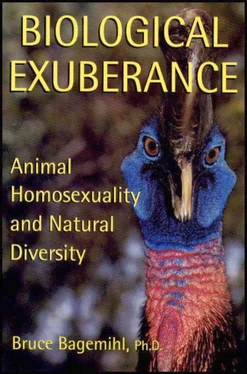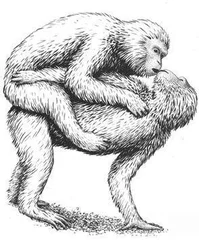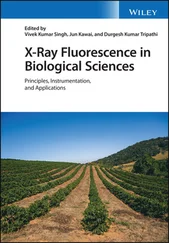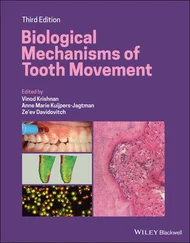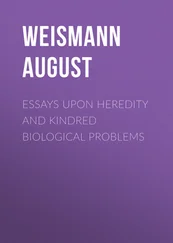61
Bottlenose Dolphin (Florida—Wells 1991:219–20, Wells 1995; Ecuador—Félix 1997:14; Australia—Connor et al. 1992:419, 426; Bahamas—Herzing and Johnson 1997).
62
Squirrel Monkey (Travis and Holmes 1974:55); Stumptail Macaque (Chevalier-Skolnikoff 1976:524); Wolf (Zimen 1981:140); Savanna (Yellow) Baboon (Maxim and Buettner-Janusch 1963:176); Mountain Sheep (Geist 1971:162). For arguments against this being simple “displacement” or “redirected” (hetero)sexual activity, see chapter 4. On a related point, scientists have observed that male Oystercatchers in trios are unable to influence or “promote” homosexual activity among their female partners, yet males may suffer reproductive losses without the cooperation between females entailed by such same-sex activity (Heg and van Treuren 1998:690). Thus, males are essentially powerless to cultivate homosexual activity in females even when this activity may benefit them.
63
Dagg, “Homosexual Behavior and Female-Male Mounting in Mammals,” p. 179.
64
The one exception is R. Wrangham (quoted in Weinrich 1980:291), who suggests that male Gelada Baboons may essentially “perform” homosexual mounts in front of, and for the benefit of, females to demonstrate their mating “prowess.” This activity is not, however, claimed to be sexually stimulating for females in the same way that female homosexuality is claimed to be for males.
65
See discussion in chapter 4.
66
Kittiwake (Coulson and Thomas 1985); Western Gull (Hunt and Hunt 1977); Herring Gull (Shugart et al. 1988); Silver Gull (Mills 1991); Ring-billed Gull (Ryder and Somppi 1979; Kovacs and Ryder 1983). See also chapter 4 for further evidence against the claim that female pairs in Gulls form primarily as a breeding strategy.
67
Western Gull (Hunt et al. 1984); Black-winged Stilt (Kitagawa 1988); Lesser Scaup Duck (Afton 1993; Munro 1941); Acorn Woodpecker (W. D. Koenig, personal communication); Squirrel Monkey (Ploog 1967:159-60); Greylag Goose (Lorenz 1979, 1991); Oystercatcher (Heg and van Treuren 1998). Although female coparents in Acorn Woodpeckers are “platonic” in that they do not specifically engage in courtship or sexual behavior with one another, they still participate in the group mounting displays characteristic of this species (which usually include homosexual mounting and may actually involve mounting of their coparent).
68
Greater Rhea (Fernandez and Reboreda 1995:323, 1998:340-46); Lesser Scaup Duck (Afton 1993). The supposed “benefits” of having male nest helpers in Greater Rheas are also not readily apparent: researchers were able to demonstrate few, if any, statistically significant differences in breeding success between solitary males and those with helpers (these results are still preliminary, though, as the phenomenon has only recently been discovered; cf. Codenotti and Alvarez 1997).
69
Snow Goose (Martin et al. 1985:262-63); Black-billed Magpie (Dunn and Hannon 1989; Buitron 1988).
70
Superb Lyrebird (Lill 1979b, 1986). For a survey of mate and offspring desertion by one parent in a wide variety of bird species, see Székely, T., J. N. Webb, A. I. Houston, and J. M. McNamara (1996) “An Evolutionary Approach to Offspring Desertion in Birds,” especially pp. 275-76, 310, in V. Nolan Jr., and E.D. Ketterson, eds., Current Ornithology , vol. 13, pp. 271-330 (New York: Plenum Press). For a summary of the effects of mate removal in more than 15 bird species, see Bart, J., and A. Tornes (1989) “Importance of Monogamous Male Birds in Determining Reproductive Success: Evidence for House Wrens and a Review of Male-Removal Studies,” Behavioral Ecology and Sociobiology 24:109—16.
71
Calfbird (Snow 1972:156, 1976:108); Japanese Macaque (Vasey 1998:13—14, 16); Oystercatcher (Heg and van Treuren 1998:688-89; Ens 1998:635); Jackdaw (Lorenz 1970:202-3); Lesser Scaup Duck (Munro 1941:130— 31); Canada Goose (Allen 1934:187-88).
72
See, for example, Srivastava et al. (1991:508-9) on female Hanuman Langurs, Huynen (1997:211) on female Rhesus Macaques, Gibson and Bradbury (1986:396) on female Sage Grouse, Jamieson and Craig (1987a:1252) on male Pukeko, and Wagner (1996:213) on male Razorbills.
73
See Gouzoules and Goy (1983:47) for an explicit refutation of this hypothesis in Japanese Macaques, and Vasey, “Homosexual Behavior in Primates,” for a more general refutation for primates. See also the discussion of mountee facilitation or initiation of homosexual interactions in chapters 3 and 4.
74
Pukeko (Jamieson and Craig 1987a:1252, 1987b:321-23; Jamieson et al. 1994:275-76); Ocher-bellied Flycatcher: only 4 out of 12 courtship interactions between males occurred when a female was present (Westcott and Smith 1994:680); Guianan Cock-of-the-Rock (Trail and Koutnik 1986).
75
Buff-breasted Sandpiper (Myers 1989:44-45; Pruett-Jones 1988:1745-47; Lanctot and Laredo 1994:9).
76
A. P. Møller, in Lombardo et al. 1994:556 (Tree Swallow).
77
As pointed out by Lombardo et al. (1994:556). In Tree Swallows, there are further arguments that reproductively oriented “sperm-swapping” is probably not involved. In one observation of homosexual mating in this species, the bird that other males were copulating with was already tending chicks, i.e., his mate could no longer be fertilized (the homosexual copulations occurred fairly late in the breeding season). Although some females may still have been fertile at that point because they had not yet laid eggs (M. P. Lombardo, personal communication), and reproductive copulations can occur fairly late in the season in this species (Robertson et al. 1992:11), it seems unlikely that homosexual matings are generally timed to take advantage of reproductive opportunities. In particular, they do not appear to be more prevalent earlier in the breeding season when putative “sperm-swapping” would be more likely to result in fertilizations (Lombardo, personal communication).
78
Pukeko: See Craig (1980:593, 601—2) for speculation on the “possible swapping of sperm during female homosexual cloacal contacts” as well as synchronization of egg laying. On the mechanisms that independently insure obscured paternity and shared parenting, see Jamieson et al. 1994:274—76; Jamieson and Craig 1987b:323-25.
79
Best, R. L, and M. A. O’Brien (1967) The Book of Leinster , vol. 5, lines 35670—35710. (Dublin: Dublin Institute for Advanced Studies); Greene, D. (1976) “The ‘Act of Truth’ in a Middle-Irish Story,” Saga och Sed (Kungliga Gustav Adolfs Akademiens Arsbok) 1976:30—37.
80
Boswell, J. (1994) Same-Sex Unions in Premodern Europe , pp. xxviii—xxix (New York: Villard Books). In discussing this story, Greene (1976:33-34) cites several “extremely rare” examples from the late 1800s, of questionable validity, in which women supposedly became pregnant from homosexual activity in this way. Regardless of whether conception by this means has been “documented” or is even biologically possible, what stands out in these descriptions of both human and animal homosexuality is their concern with heterosexuality . Namely, the putative role of same-sex activity in facilitating insemination is emphasized, and there is an insistence on ascribing a reproductive function to homosexual activity.
81
For a good summary and survey of some current strains of thought in this area, see Abramson, P. A., and S. D. Pinkerton, eds. (1995) Sexual Nature, Sexual Culture (Chicago: University of Chicago Press).
82
African Elephant (Sikes 1971:266).
83
Cordero, A. (1995) “Correlates of Male Mating Success in Two Natural Populations of the Damselfly Ischnura graellsii (Odonata: Coenagrionidae),” Ecological Entomology 20:213—22.
Читать дальше
